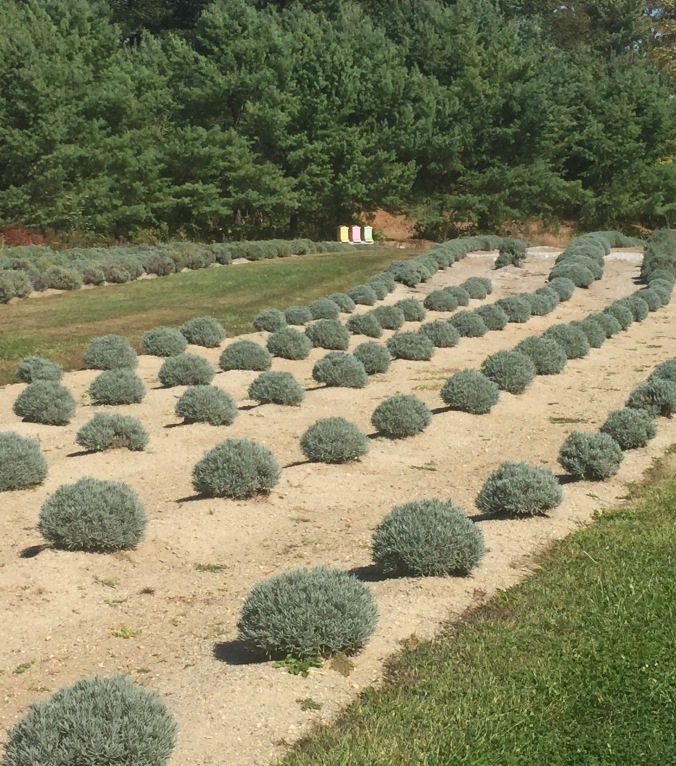Note: This is the 5th in a series of posts about Community Supported Agriculture. Today, we tackle cookbooks, one of the most crowded markets in publishing. Here, we review Susie Middleton’s book Simple Green Suppers. For more on Middleton, visit her website at http://sixburnersue.com/cooking-fresh-eating-green/.

With all the new cooking books, where do you start? Here’s just a sampling of the latest offerings at my hometown bookstore Breakwater Books in Guilford, CT.
I have a little thing going with my sister-in-law Ann.
We often exchange “gifties.” I’d love to take credit for the term, but it’s undeniably Ann. She’s the type of gal who spends hours wrapping Christmas gifts in her impeccably equipped wrapping station. She’s the kind of woman who wears a turtleneck and black skirt and makes you think, “How elegant.”
My mother-in-law had a term for her: “Our Ann.” Those who know her know what I’m talking about.
Ann and her husband Ted, who live on Martha’s Vineyard, stayed overnight last spring en route to New Jersey, and she presented me with a fantastic giftie. It’s a signed copy of Simple Green Suppers: A Fresh Strategy for One-Dish Vegetarian Meals by Susie Middleton.

The front cover of Simple Green Suppers by Susie Middleton. All of the meals are vegetarian, but the book leaves lots of room for improvisation.
Inside, Ann wrote: “I hope you love this as much as I do.” Yes, I do. I really do.
What I love is it’s the best of Martha’s Vineyard – plainspoken, down to earth, relatable and breathtakingly beautiful. (We won’t talk about the worst of MVY, one of which is referring to it as MVY.) Leafing through the recipes and Randi Baird’s stunning photographs, you feel closer to the land. Middleton’s voice is casual and comfortable – like a friend who stops over for coffee and helps you rearrange your pantry.
It’s a primer on quick healthy meals with plenty of room for improvisation. It also advocates shifting to one-dish suppers rather than putting three different foods on the plate. Where has this woman been all my life?
At the Kale Queen’s suggestion, we decided to dive into Middleton’s 4th cookbook and test drive a few recipes. What I enjoyed most is mine required no cooking except for the pasta. It keeps the kitchen – and the cook – cool on hot, steamy nights.
TUSCAN PASTA with NO-COOK TOMATO, OLIVE, BASIL & CAPER SAUCE

Some people like their tomatoes diced finely, but I like larger pieces. Here, I topped off the dish with some Parmesan cheese.
I made this dish a few weeks ago when I got about a dozen beautiful red and yellow tomatoes in my CSA share. The hardest part was keeping tomato juice from dripping down the cabinets while slicing and dicing. I made it again last night and put a small cutting board in a rimmed cookie sheet to catch the juices.
I eat a lot less red sauce, or what my Italian grandmother called “gravy,” these days because I have a problem digesting acid in canned tomatoes. This dish allows me to indulge in one of my favorite meals. You can serve the olives on the side, but don’t skip the capers. They make the sauce.
INGREDIENTS
1/4 cup mild extra-virgin olive oil
2 TB orange juice
1 TB finely chopped capers
2 tsp fresh lemon juice
1 tsp freshly grated lemon zest
2 tsp chopped fresh garlic
2 tsp honey
1/4 tsp red pepper flakes
Kosher salt
Freshly ground pepper
2 cups diced ripe beefsteak tomatoes, cored but not seeded or skinned, juices included
1/2 cup pitted Kalamata olives, cut lengthwise into quarters
4 ounces feta cheese, crumbled
1/3 cup torn and packed fresh basil leaves
8 ounces (I used a full pound) gemelli or other twisty or curly pasta shape
- In a large wide mixing bowl, whisk together the olive oil, orange juice, capers, lemon juice, lemon zest, garlic, honey, red pepper flakes, 1/2 tsp of kosher salt, and several grinds of the black pepper. Add the tomatoes, olives, feta, and half of the basil and toss well. Let sit for 15 or 20 minutes while you cook the pasta.
- Bring a small stockpot of well-salted water to a boil. Add the pasta and cook al dente (about 12 minutes). Drain well in a colander but do not rinse. Transfer the warm pasta to the mixing bowl with the tomato mixture. Season the pasta directly with a big pinch of salt, then add most of the remaining basil and toss gently but thoroughly. If needed, season with more salt and pepper to taste.
- Transfer to a large, shallow serving bowl or individual bowls or plates. Garnish with any remaining basil and eat warm.
Serves 4
KALE QUEEN:

Roasted cherry tomatoes and butternut squash combined with lentils and corn make a quick and satisfying dish.
This recipe’s initial appeal was it incorporated several ingredients I had on hand: cherry tomatoes, butternut squash, corn, cilantro and a can of lentils from one of my favorite purveyors, Bioitalia, an Italian brand. But, I had some concerns. Combining butternut squash and lentils? Their affinity for each other didn’t seem obvious. And would the end result look pleasing or like random ingredients thrown together? Some quick research revealed that butternut squash and lentils are often paired in Mediterranean cooking. Since it’s one of my favorite cuisines, I decided to proceed.
Assembly was easy. The butternut squash and tomatoes roasted quickly. Corn was blanched. Garlic and cilantro minced. I put everything in a bowl with the drained and rinsed lentils and added a little lemon (I didn’t have the specified lime) and orange juice and salt and pepper to taste. Time to complete took about a half hour.
The salad was terrific! The roasted tomatoes add a special sweetness and for those who like cilantro, it adds an intriguing zip. I liked using Bioitalia’s canned lentils—I think they are Umbrian. They are perfectly cylindrical and stay intact. Even though it’s easy to make a batch of lentils, I’d worry they would be mushy and unappealing in this salad.
Although this cookbook is about simple, green “suppers,” I associate supper with an evening meal. I think this recipe is better for lunch or as a first course. I’m not sure it would satisfy my hungry guinea pig (a human being, not an animal) by itself as a meal, but as a side, he gave it a thumbs up.
(G Sandwich: I didn’t have any lentils so I substituted quinoa. It was delicious.)
ROASTED CHERRY TOMATO, BUTTERNUT SQUASH, AND WARM LENTIL SALAD (With Citrus Mojo Dressing)
8-9 ounces ripe cherry tomatoes, cut in half
2 TB extra virgin olive oil
10-12 ounces butternut squash, peeled and cut into 1/2-inch slices
2 cups cooked lentils
1/3 to 1/2-cup fresh corn kernels, blanched or microwaved for 30 seconds or frozen corn, thawed
1 TB plus 1 to 2 tsp lime juice
1 TB orange juice
1 tsp minced fresh garlic
2-3 TB chopped fresh cilantro
- Pre-heat oven to 450 degrees. Line a heavy-duty rimmed baking sheet with parchment paper. In a medium bowl toss the squash with 1 TB of the olive oil and a big pinch of salt. In other medium bowl, gently toss the cherry tomatoes with the remaining tablespoon of olive oil and a big pinch of salt.
- Spread the squash in a single layer over one half of the prepared baking sheet. Bake for 5 minutes. Remove the baking sheet from the oven and carefully tip the bowl of cherry tomatoes onto the other side. (If most of the halves can be side up, that’s ideal.) Bake for 22-24 minutes, until the squash is tender and browned and the cherry tomatoes are shrunken and a bit charred around the edges. (You can flip the squash once with a metal spatula, but don’t mess with the cherry tomatoes.) Let the veggies cool for 10 minutes or so on the baking sheet.
- If the lentils are cold, microwave them for 45 seconds to 1 minute to take the chill off. Put the lentils, corn, 1 tablespoon plus 1 teaspoon of the lime juice, the orange juice, garlic, a big pinch of salt, and 1-2 tablespoons of the cilantro in a large bowl. Toss gently but thoroughly. Taste, then add more salt and/or the remaining teaspoon of lime, if needed. (Be aware that all the flavors build over time.)
- Using the spatula, gently scrape the cherry tomatoes and squash off the baking sheet and into the bowl with the lentil mixture. (Don’t worry if some of the tomatoes fall apart, just be sure to scrape the bits off the pan-they are full of flavor.) Toss gently again. Transfer the warm salad to a serving dish or three serving bowls, and garnish with the remaining tablespoon of cilantro.
Serves 3.













